Comments / Questions (10)
![]() A Van Gent wrote:
A Van Gent wrote:
Kan dit patroon ook op gewone naalden gebreid worden Zoja,moet ik dan iets aanpassen of kan ik he5 patroon zo nabreien? M vr Gr Anja
27.09.2021 - 15:57DROPS Design answered:
Dag A van Gent,
Ja, dat kan bij dit patroon. Om een patroon aan te passen om op rechte naalden te breien hebben we een instructie gemaakt. Deze vind je hier.
30.09.2021 - 11:04
![]() A Van Gent wrote:
A Van Gent wrote:
Kan dit patroon ook met gewone naalden Moe5 ik dan iets aanpassen
27.09.2021 - 15:52
![]() Melina wrote:
Melina wrote:
Bonjour, Je rencontre un soucis pour comprendre comment réaliser le devant du gilet. Pour la taille M je démarre avec 32 mailles puis je dois augmenter 1 fois donc ça fait 33m puis je dois diminuer au niveau de l'encolure 10 fois j'ai donc 23m puis enfin rabattre 4m pour l'emmanchure ce qui donne 19m hors a ce niveau là des explications je devrais avoir 16m. Où me suis-je trompée?
07.12.2015 - 11:50DROPS Design answered:
Bonjour Melina, il faut en fait diminuer et augmenter comme pour le dos (les diminutions manquaient, la correction a été faite), ainsi on a 32 m - 4 dim + 1 augm - 10 dim - 3 dim = 16 m. Bon tricot!
07.12.2015 - 13:57
![]() Pernille wrote:
Pernille wrote:
Kan denne strikkes på alm pinde i stedet for rundpinde?
07.10.2013 - 11:04DROPS Design answered:
Hej Pernille. Ja, det tror jeg sagtens du kan. God fornöjelse.
07.10.2013 - 14:41
![]() DROPS Design NL wrote:
DROPS Design NL wrote:
Hallo Ria. Wij passen helaas niet de patronen aan voor individuele gebruikers. Maat XXXL is ongeveer vergelijkbaar met 46+. Onderaan het patroon staat ook een maattekening in cm. U kunt deze eventueel zelf aanpassen in de lengte en breedte (denk aan de steekverhouding). Succes. Tine
07.09.2009 - 10:17
![]() RiaG wrote:
RiaG wrote:
Kan ik dit patroontje ook in maat 52tot 54 ontvangen alvast bedankt hoor
04.09.2009 - 18:02
![]() Elaine wrote:
Elaine wrote:
Looks flattering to the older and larger Me. pretty.
30.07.2009 - 02:47
![]() Sarah wrote:
Sarah wrote:
En så fin väst! Längtar efter att få sätta igång !
29.06.2009 - 20:55
![]() Yvonne wrote:
Yvonne wrote:
Vilken tur att den här västen kom med :-)
25.06.2009 - 12:56
![]() Wendy wrote:
Wendy wrote:
If I had a big pile of Puddel, it would be fun to spend it on this. I love to make vests, and the long ones seem more rare. I like how the sides are split.
25.06.2009 - 05:14
White Teddy |
|
|
|
|
Knitted DROPS sleeveless top with split at the side and garter st edges in ”Puddel”. Size S - XXXL.
DROPS 115-28 |
|
|
GARTER ST (back and forth on needle): K all rows. DECREASING TIP (apply to neck and armhole): Dec 1 st by K2 tog. BUTTONHOLES: Make buttonholes on right front band. 1 buttonhole: work 3 sts from mid front, bind off the next 2 sts, work remaining sts on row. Cast on 2 new sts over the bind off sts on return row. Make buttonholes when piece measures: Size S: 28, 36, 44 cm / 11", 14¼", 17¼" Size M: 29, 37, 45 cm / 11⅜", 14½", 17¾" Size L: 30, 38, 46 cm / 11¾", 15", 17¾" Size XL: 31, 39, 47 cm / 12¼", 15¼", 18½" Size XXL: 32, 40, 48 cm / 12½", 15¾", 18" Size XXXL: 33, 41, 49 cm / 13",16⅛", 19¼" -------------------------------------------------------- -------------------------------------------------------- BACK PIECE: Worked back and forth on circular needle. Cast on 52-56-60-66-72-78 sts on circular needle size 6 mm / US 10 (includes 1 edge st each side). Work GARTER ST – see above - back and forth on needle until piece measures 12 cm / 4¾". Now continue in stockinette st with 5 garters sts each side. When piece measures 26 cm / 10¼" work stockinette st on all sts. REMEMBER THE GAUGE! Insert 2 markers in piece, 1 after 17-19-21-23-26-29 sts and 1 after 35-37-39-43-46-49 sts. When piece measures 27 cm / 10⅝" dec 1 st on the outside (i.e. towards the side) of both markers and repeat the dec on every 2 cm / ¾" a total of 4 times = 44-48-52-58-64-70 sts. When piece measures 37 cm / 14½" inc 1 st on the outside of both markers = 46-50-54-60-66-72 sts. When piece measures 50-51-52-53-54-55 cm / 19¾"-20"-20½"-21"-21¼"-21⅝" work 4 rows garter st on 5-6-7-7-9-10 sts each side with remaining sts in stockinette st as before. Now bind off for armhole each side: 3-4-5-5-7-8 sts 1 time = 40-42-44-50-52-56 sts. Continue in stockinette st with 2 garter sts each side, AT THE SAME TIME bind off to shape the armhole inside 2 garter sts each side on every other row – see DECREASING TIP: 1 st a total of 0-0-1-3-4-5 times = 40-42-42-44-44-46 sts. When piece measures 68-70-72-74-76-78 cm / 26¾"-27½"-28⅜"-29⅛"-30"-30¾" work 4 rows garter sts on the middle 26-26-28-28-30-30 sts (work remaining sts in stockinette st with 2 garter sts each side as before). Now bind off the middle 8-8-10-10-12-12 sts for neck and complete each side separately. Bind off 1 st on neckline on next row = 15-16-15-16-15-16 sts left on shoulder. Bind off when piece measures 72-74-76-78-80-82 cm / 28⅜"-29⅛"-30"-30¾"-31½"-32¼". LEFT FRONT PIECE: Worked back and forth on needle. Cast on 30-32-34-37-40-43 sts (includes 1 edge st at the side) on circular needle size 6 mm / US 10. Work garter st back and forth on needle until piece measures 12 cm / 4¾". Continue in stockinette st with 5 garter sts towards the side and 8 garter sts towards mid front (= front band). Work front band in garter st throughout. When piece measures 26 cm / 10¼" continue in stockinette st on all sts. Insert a marker in piece, 17-19-21-23-26-29 sts from the side. Now dec and inc on the outside of marker (i.e. towards the side) as described for back piece. When piece measures 45-46-47-48-49-50 cm / 17¾"-18"-18½"-19"-19¼"-19¾" work 2 rows garter st, back and forth on only the 8 front band sts (to make neckline neat). On next row dec 1 st inside the 8 front band sts to shape the neckline – see DECREASING TIP! Repeat the dec on every 3-3-2.5-2.5-2.5-2.5 cm / 1⅛"-1⅛"-⅞"-⅞"-⅞"-⅞"- a total of 9-9-10-10-11-11 times. AT THE SAME TIME when piece measures 50-51-52-53-54-55 cm / 19¾"-20"-20½"-21"-21¼"-21⅝" work garter st and bind off for armhole at the side as described for back piece = 15-16-15-16-15-16 sts left on shoulder. Bind off when piece measures 72-74-76-78-80-82 cm / 28⅜"-29⅛"-30"-30¾"-31½"-32¼". RIGHT FRONT PIECE: Like left front piece, but mirrored. AT THE SAME TIME beg making BUTTONHOLES when piece measures 28-29-30-31-32-33 cm / 11"-11⅜"-11¾"-12¼"-12½"-13" – see above. ASSEMBLY: Sew side seams inside 1 edge st, but leave 25 cm / 9¾" towards bottom edge for split. Sew shoulder seams. Sew on buttons. |
|
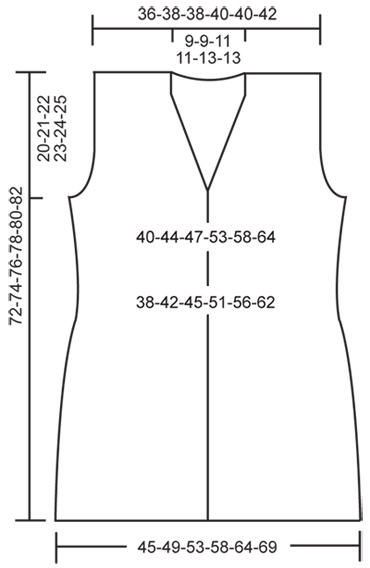 |
|
Have you finished this pattern?Tag your pictures with #dropspattern or submit them to the #dropsfan gallery. Do you need help with this pattern?You'll find 17 tutorial videos, a Comments/Questions area and more by visiting the pattern on garnstudio.com. © 1982-2025 DROPS Design A/S. We reserve all rights. This document, including all its sub-sections, has copyrights. Read more about what you can do with our patterns at the bottom of each pattern on our site. |










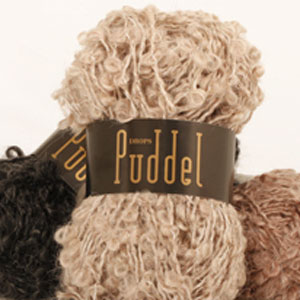
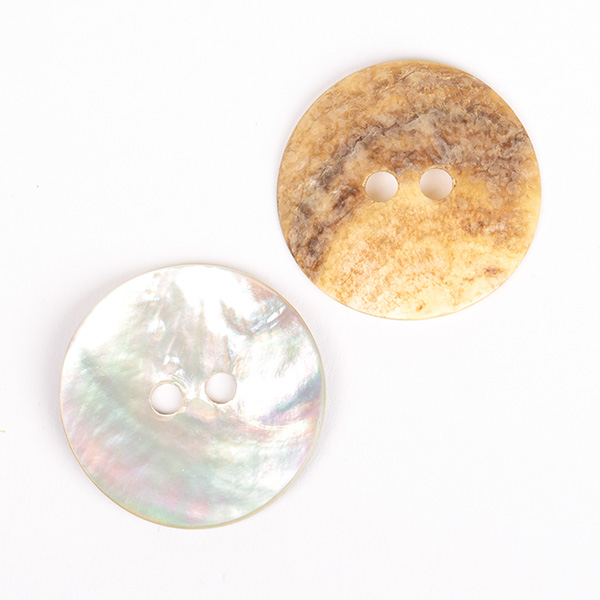























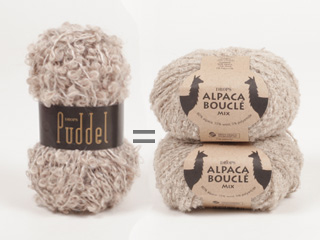












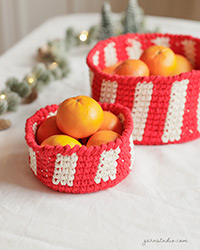
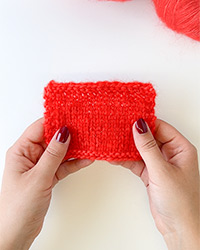
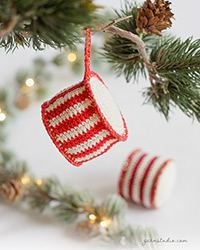
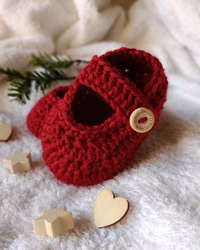
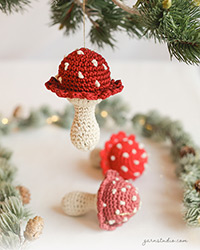
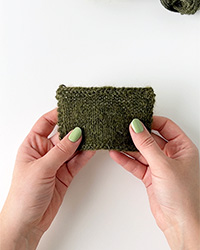
Post a comment to pattern DROPS 115-28
We would love to hear what you have to say about this pattern!
If you want to leave a question, please make sure you select the correct category in the form below, to speed up the answering process. Required fields are marked *.